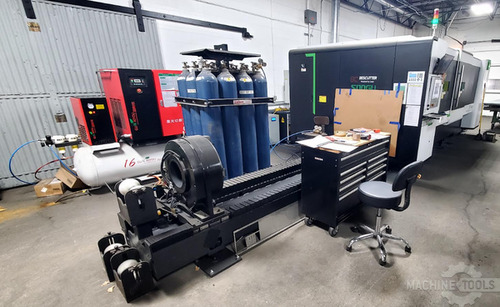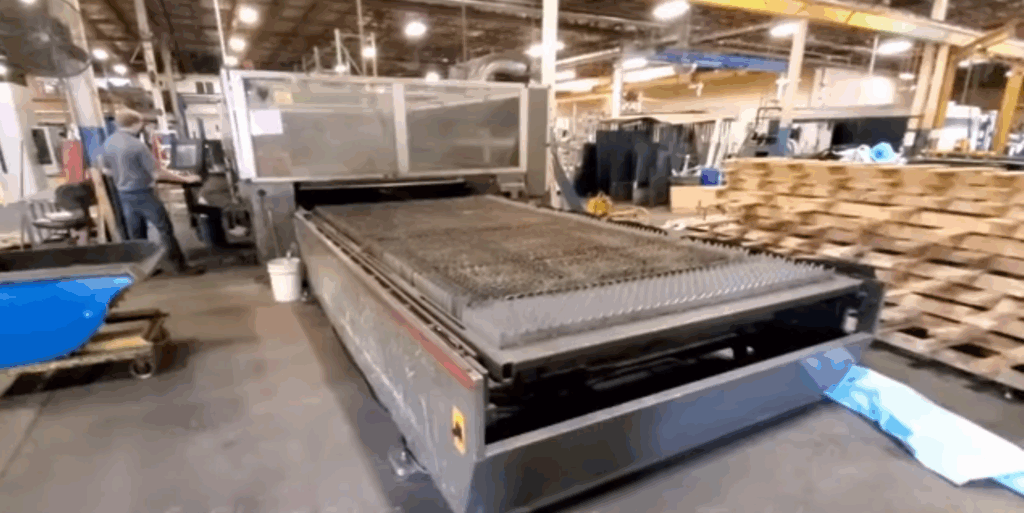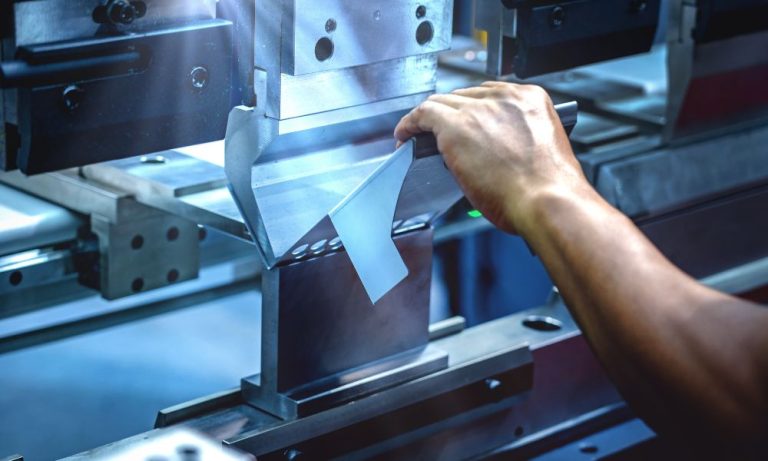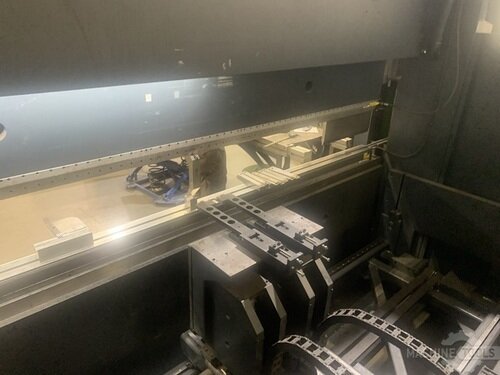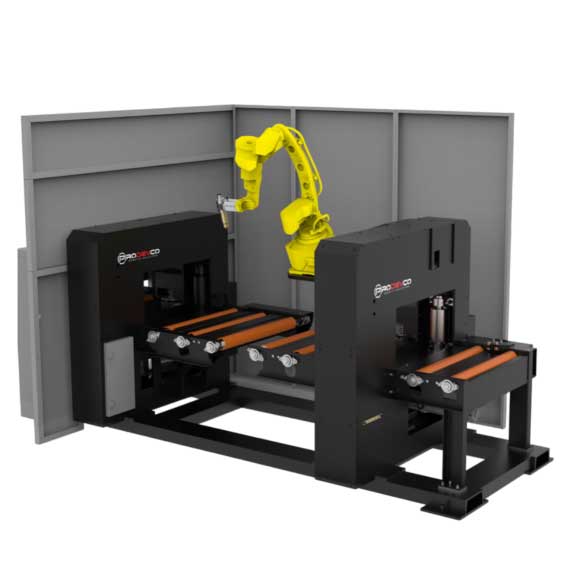When I sit down with fabrication shop owners—whether they’re expanding from manual processes or investing in their first automated laser—my goal is always the same: to help them make confident, informed decisions that drive growth. With years as a Regional Sales Executive at Mac-Tech, I’ve seen firsthand how the right fiber laser can transform a shop’s capabilities, efficiency, and bottom line. Through one-on-one consultations, I help fabricators weigh the real-world impact of different laser wattages, integrating new systems with existing press brakes, and maximizing ROI. Here’s what I’ve learned about the most common decision point for entry-level shops: choosing between a 3kW and a 6kW Ermaksan Fibermak sheet laser.
Understanding the Needs of Entry-Level Fabrication Shops: A Sales Perspective
Entry-level fabrication shops face unique pressures—tight budgets, lean teams, and the constant challenge of winning business against larger competitors. They need equipment that delivers reliable, repeatable quality without overwhelming their resources or requiring a steep learning curve. For many, the first fiber laser purchase is a pivotal investment that sets the tone for future growth.
My approach starts with listening: understanding what materials you process, your typical job sizes, and how quickly you need to turn around orders. Many shops are looking to expand their capabilities beyond manual shearing or plasma cutting, aiming for higher precision and faster throughput. The right fiber laser bridges that gap, but the choice between 3kW and 6kW isn’t just about power—it’s about matching equipment to your business model, workforce, and long-term goals.
Comparing 3kW and 6kW Ermaksan Fibermak Lasers: Key Technical Differences
The Ermaksan Fibermak line is engineered for reliability and versatility, but the jump from 3kW to 6kW brings meaningful differences. At 3kW, you get a robust machine well-suited for mild steel, stainless, and aluminum up to moderate thicknesses. It offers excellent cut quality and speed for most entry-level needs, with manageable power requirements.
A 6kW model, by comparison, opens the door to thicker materials and dramatically faster cutting speeds—especially on mid-gauge sheets. The higher wattage translates to more laser energy delivered per second, meaning you can process jobs faster and tackle a wider range of applications. However, this comes with increased energy consumption and, typically, a higher upfront investment. Understanding these technical trade-offs is crucial for making the right call for your shop.
Cutting Speed in Practice: Meeting Production Demands and Delivery Deadlines
In real-world shop conditions, cutting speed differences between 3kW and 6kW lasers can be dramatic—especially as material thickness increases. On thin-gauge steel (say, 1/8″ or below), both machines perform admirably, but the 6kW will generally cut 30–60% faster. As you move into 1/4″ or thicker materials, the 6kW’s advantage grows, often doubling or even tripling throughput.
For shops with fluctuating workloads or tight delivery schedules, that speed can be a game changer. It means more jobs completed per shift, less overtime, and the ability to take on rush orders with confidence. However, if your core business is lighter-gauge work and your production volume is steady, a 3kW may provide all the speed you need—without the higher operating costs.
Edge Quality Expectations: Delivering Consistent Results for Your Customers
Cut edge quality is where fiber lasers truly shine over plasma or oxyfuel systems, and both the 3kW and 6kW Ermaksan Fibermak deliver clean, burr-free results on mild steel, stainless, and aluminum. That said, higher wattage isn’t always synonymous with better edge quality. In fact, running a 6kW too fast on thin material can sometimes degrade the finish or introduce dross.
The key is matching the power and speed to the material and thickness. Both lasers are equipped with advanced controls and cutting heads that allow for fine-tuning, so you can consistently deliver the edge quality your customers demand. Training and process support from Mac-Tech ensures your operators know how to optimize settings for every job.
Power vs. Cost: Evaluating Energy Consumption and Operational Expenses
Energy consumption is a real consideration, especially for shops watching their monthly utility bills. While the 6kW laser delivers higher throughput, it also requires more power—both for the laser source and the supporting systems (chillers, extraction, etc.). Over time, these operating costs can add up.
Conversely, the 3kW model is more energy efficient and generally easier on your shop’s electrical infrastructure. If your production mix doesn’t demand the extra speed of a 6kW, the savings in operational expenses can be significant. I always encourage shop owners to look beyond just the sticker price and consider the total cost of ownership over the machine’s lifecycle.
Integrating Laser Systems with Existing Press Brakes and Tooling Setups
For many entry-level shops, a new laser isn’t an island—it needs to work seamlessly with existing press brakes and downstream processes. Ermaksan Fibermak lasers are designed with integration in mind, offering straightforward part nesting, offload, and handoff to bending operations.
At Mac-Tech, we help customers evaluate their entire workflow, ensuring that cut parts are dimensionally accurate and ready for forming with minimal rework. Our team can advise on tooling, fixturing, and even software integration, so you get the most out of both your new laser and your existing press brake investment.
Real-World ROI: Balancing Upfront Investment with Long-Term Productivity
ROI isn’t just about cutting speed—it’s about how a new machine impacts your shop’s ability to win more business, reduce labor costs, and minimize scrap. A 3kW laser often offers the fastest payback for shops focused on light to mid-gauge materials, thanks to lower energy use and a smaller upfront investment.
However, if your growth plans include thicker materials, higher volumes, or more diverse work, the 6kW’s productivity gains can quickly offset the higher purchase price. We regularly help customers run detailed ROI calculations, factoring in local energy rates, labor savings, and projected job volume to ensure the investment aligns with their business goals.
BESCUTTER FLY PRO 3015
CINCINNATI CL840
Common Pitfalls and Success Stories: Lessons from the Shop Floor
One common pitfall I see is shops over-buying on wattage, thinking more power automatically means better results. In reality, the best fit depends on your unique workload and growth plan. On the flip side, under-powering can limit your ability to take on new work or force you to outsource thicker jobs, leaving profit on the table.
Success stories abound—like the Midwest job shop that started with a 3kW, then upgraded to a 6kW as their customer base grew, or the small family shop that doubled output by integrating a 3kW laser and a CNC press brake. In each case, careful planning and honest assessment of needs made all the difference.
Tailoring Solutions: How Mac-Tech Supports Your Equipment Decisions
At Mac-Tech, we see ourselves as long-term partners, not just equipment suppliers. We take the time to understand your workflow, budget, and growth trajectory before recommending a solution. Whether it’s a 3kW or 6kW Ermaksan Fibermak, our support extends from initial consultation through installation, training, and ongoing service.
We also offer process audits and integration support for your press brakes, material handling, and software systems. Our goal is to ensure your new laser not only meets today’s needs but also positions your shop for future success.
Next Steps: Personalized Consultations and Hands-On Demonstrations
If you’re considering a fiber laser investment, there’s no substitute for seeing one in action. We invite you to schedule a personalized consultation—either at your shop or at one of our demonstration facilities. You’ll have the chance to discuss your specific needs, see sample cuts, and ask the tough questions that matter to your bottom line.
Reach out to me directly at jperry@mac-tech.com, and let’s start the conversation. Together, we can chart a path to greater efficiency, precision, and profitability for your fabrication business.
Frequently Asked Questions
What’s the main difference in productivity between a 3kW and 6kW Ermaksan Fibermak?
The 6kW model cuts thicker materials much faster, but the 3kW is ideal for light to medium gauges with lower energy costs.
Will a 6kW laser give me better edge quality than a 3kW?
Not always. Both can produce excellent edges if properly set up. The key is matching speed and power to the material.
How do I know if my shop’s electrical service can handle a 6kW laser?
We’ll review your facility’s power infrastructure during our consultation to ensure compatibility and recommend any needed upgrades.
Can I use my existing press brake with a new laser?
Yes—most shops integrate their laser with their current press brake. We can help optimize part flow and programming for seamless operation.
Is the higher upfront cost of a 6kW laser worth it for entry-level shops?
It depends on your workload. If you cut thicker materials or have high volumes, the faster throughput may justify the investment.
How long does it take to train operators on these machines?
Most shops find operators are productive within a week, thanks to user-friendly controls and comprehensive training from Mac-Tech.
Get Weekly Mac-Tech News & Updates

